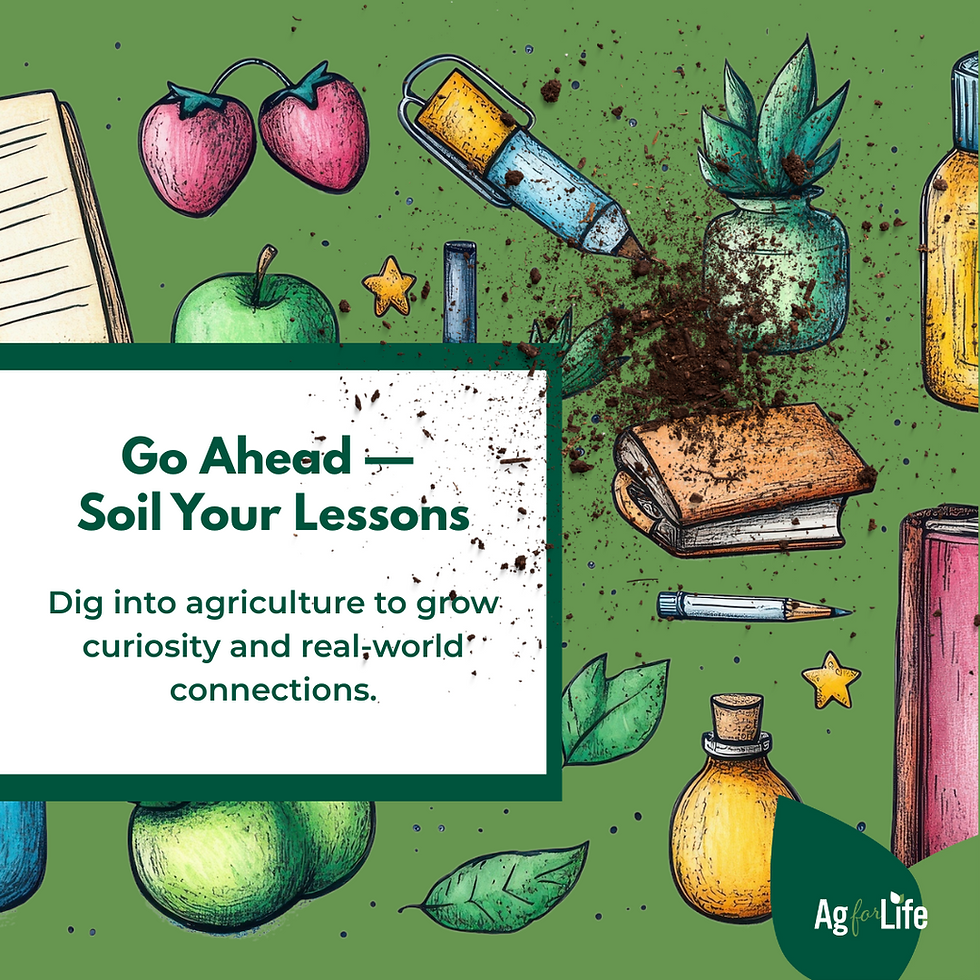Soil Your Lessons: Why the Best Classrooms Get a Little Dirty
- agforlife
- Jul 24, 2025
- 2 min read
Let’s face it — the best learning doesn’t always happen inside the lines. Sometimes, it takes root in the mess, the questions, and the hands-on experiences that spark genuine curiosity.
That’s why agriculture education belongs in every classroom.

When you bring agriculture into your lessons — whether through soil experiments, food systems, plant growth, sustainability, or community connections — you’re not just “checking a curriculum box.” You’re giving students a chance to connect what they’re learning to real life.
Why Ag Education Works
Agriculture is one of the richest (and most overlooked) tools in your teaching toolkit. It’s:
Cross-curricular: Blend science, social studies, ELA, and math through a single project.
Relevant: From climate change to food access, agriculture is everywhere — and your students are already part of it.
Hands-on: Students learn by doing — planting, building, questioning, experimenting, reflecting.
Empowering: Ag helps students understand how the world works and how they can shape it.
Ready to Soil Your Lessons?
Here are three simple ways to bring agriculture into your classroom — no farm field trip required:
Start with What’s in Their Lunchbox
Use everyday food items to explore where things come from, how they’re grown, and who’s involved along the way.
Grow Something (Even in a Window!)
Track germination, plant cycles, and soil health with a mini classroom garden or seed jars.
Ask Real-World Questions
Why does food cost more this year? How does farming affect our community and cultural identities?
Let Learning Get a Little Dirty
By “soiling your lessons,” you’re grounding learning in something tangible. Something human. Something that grows.
Agriculture education doesn’t just teach facts — it cultivates curiosity, responsibility, and a deeper connection to the world around us.
So don’t be afraid to dig in and get dirty!



